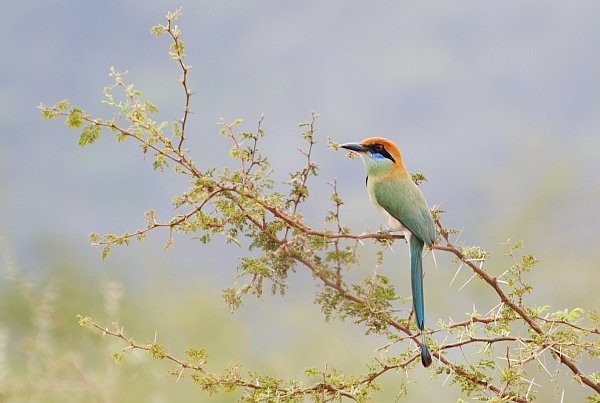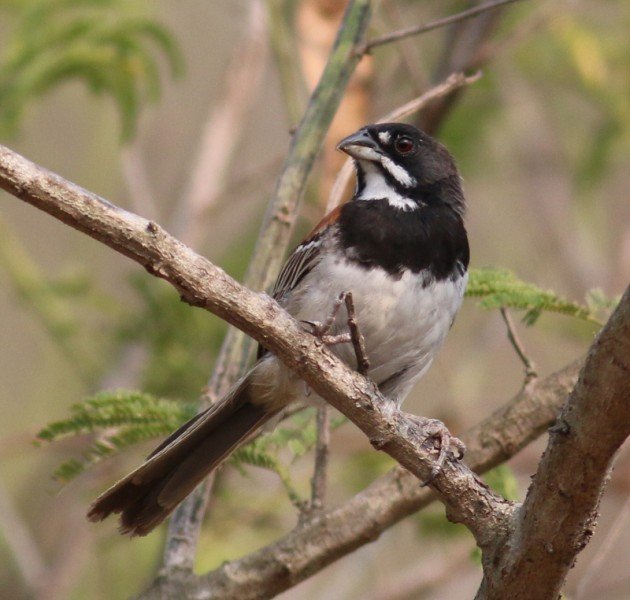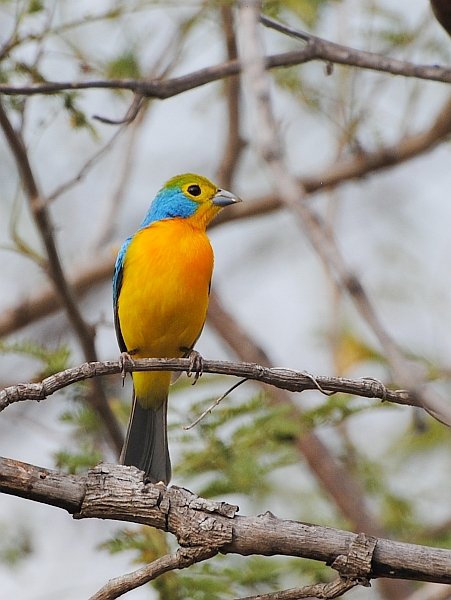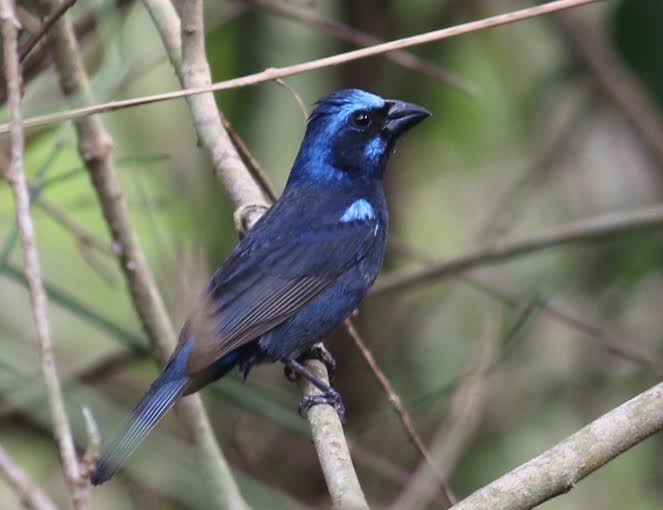
Back in early March, Andrew Spencer asked me if I would like to go birding in western Mexico with him and another friend in May. The thought of seeing Red Warbler, Tufted Jay, Black-throated Magpie-Jay, and other spectacular Mexican endemics danced within my imagination. Many of these species were very high on my life bird wish list, and the country itself would be a totally new experience: a vibrant and enchanting culture, a varied and tasty cuisine, and stunning and new landscapes. I could not refuse.
Time flew by. Before I knew it, it was late May, and I was on the road in Colima, Mexico with Andrew Spencer and Nathan Pieplow on a birding adventure! Within a few hours of arriving at the airport, we were listening for birds on a dusty road that led to the town of Piscila. Golden-cheeked Woodpecker, a stunning relative of the more familiar Red-bellied of the eastern United States, proved to be the first Mexican endemic we encountered. They were to be a welcome and familiar sight in the lowlands everywhere we went throughout the trip. However, our attention soon turned to a pair of fantastic Black-chested Sparrows duetting in the thorn-scrub right by the road. Boldly patterned and full of character, this endemic sparrow was the highlight of my first day in Mexico.
Black-chested Sparrow is pretty sharp! Photo by Nathan Pieplow.
However, the thorn-scrub forest near Colima had several more gems in store for us that afternoon. We hopped over to the nearby microwave tower road (Microondas La Cumbre), driving up the cobbled road and stopping wherever we thought the habitat looked good. The forest along this road is mostly deciduous thorn-scrub with a low canopy. The trees were just starting to leaf out, making the birds easier to see. At the first stop, we observed a shy Lesser Ground-Cuckoo as it called and snapped its bill intermittently in the undergrowth. Appearing out of a dry swale of grass, a male Orange-breasted Bunting glowed in the late afternoon light — another endemic of western Mexico. We decided to take it easy that first evening and try owling on another date.
How can one not be amazed by the glowing color combination of an Orange-breasted Bunting?
On our second day, we drove to Piscila at first light in search of Banded Quail, a small gamebird endemic to the Balsas River drainage of Mexico. Although we struck out that day on the quail, we connected with several other wonderful species, including the Russet-crowned Motmot featured at the top of this blog post. Unlike most other members of the family, this species of motmot occurs in quite open and dry habitats. This particular bird was in a dry open field with just two thorny trees for cover! Another visit to Microondas La Cumbre resulted in views of the warbler-like Red-breasted Chat and a surprise Mangrove Cuckoo that called right over my head (I was in a state of disbelief, as this site is elevated and reasonably far inland). We then headed to the coast for a few days.
The dapper Blue Bunting is just as common as the Orange-breasted at Microondas La Cumbre. Photo by Nathan Pieplow.
After two full days of birding along the coast in Colima and Jalisco, we returned to the Microondas La Cumbre area in order to try for the two species we were still missing: Banded Quail and Balsas Screech-Owl. For the quail, we chose to try something a little different by birding side roads in the dry valley beyond Microondas La Cumbre. Unfortunately, it was already getting late, and we had little time to explore. We chose a road and stuck with it in the fading afternoon light. It seemed like a long shot at this point. As luck would have it, a covey of a couple dozen quail were feeding in the middle of the road about a mile beyond the road entrance. Yes! Driving a bit further, we encountered another covey with a dozen more birds. What’s the name of this road? On the way out, a sign read ‘Paso del Zarco’. We enjoyed birding along this road so much that we decided to bird it again the following day (we saw more quail there the following morning, so this seems to be a reliable site).
Next up was the Balsas Screech-Owl, the only owl species endemic to Mexico and unusual in the genus for having dark brown eyes. Unfortunately, heavy rain and uncooperative owls hampered us from cleaning up that day. The following morning, we decided to drive back to Microondas La Cumbre and try one more time. Only meters from where we encountered the Mangrove Cuckoo a few days prior, we spotlighted one of these magnificent (and large) screech-owls. After working so hard for them the previous night, we heard many owls (a couple at close range) right up until sunrise. A fantastic way to experience such a range-restricted life bird, and a fitting way to end the first part of the trip.
















Looking forward to more of this report! Glad you went birding there, some really nice endemics. Congrats on the quail- still need that one!
Great write up! Can’t wait to hear about the rest of trip.
Beautiful photos!!
Enjoying your writing and your and Nathan’s photos. I like how you write about your frustrations as well as your successes. First of all, knowing the misses makes the ‘gets’ so much sweeter. Also, it gives inspiration to the rest of us.
I saw a very large black bird with yellow beak. Prob 2ft tall. Had a dove in it’s claw. No one I know kknows what it is. No time for a pic.